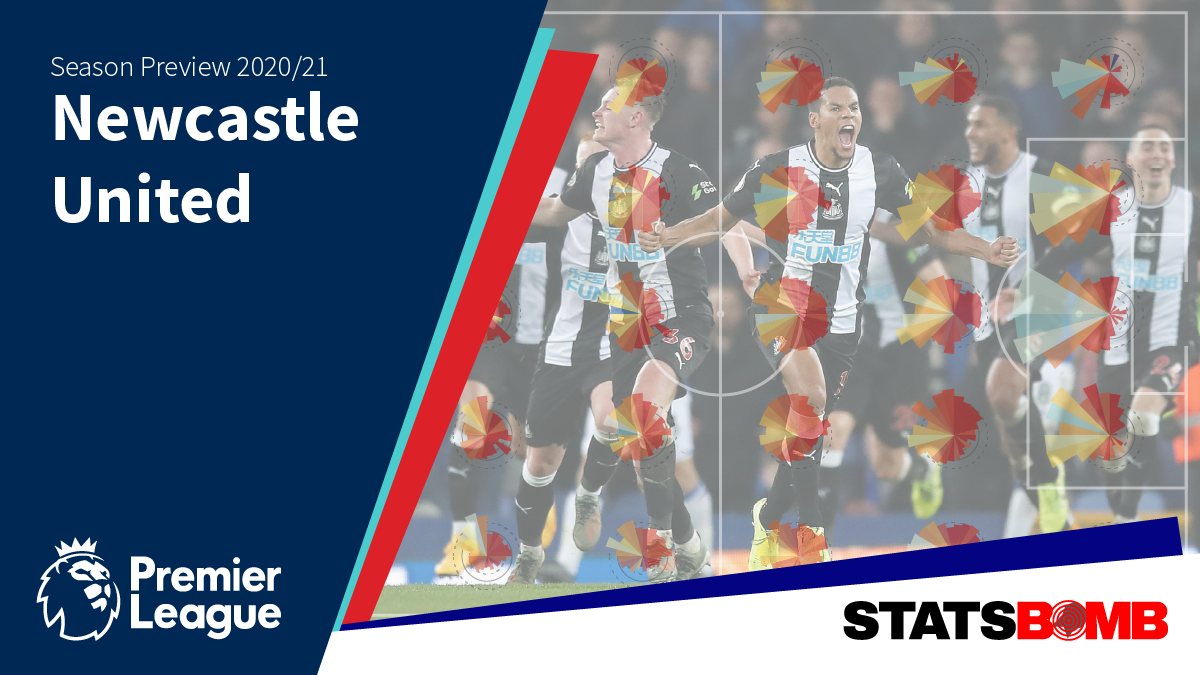Newcastle's metrics last season were bad enough to immediately make them one of the default favourites for relegation this time around. They finished 13th with a points total that was within the same range as the two previous years, but other top-line and underlying numbers revealed notable decline.
Steve Bruce’s side scored slightly fewer goals than in either of those campaigns while conceding 10 more, leading to a goal difference of -20 compared to those of -6 and -8 in the preceding seasons. That was mirrored in the metrics: the attack got marginally worse; the defence, dramatically so.
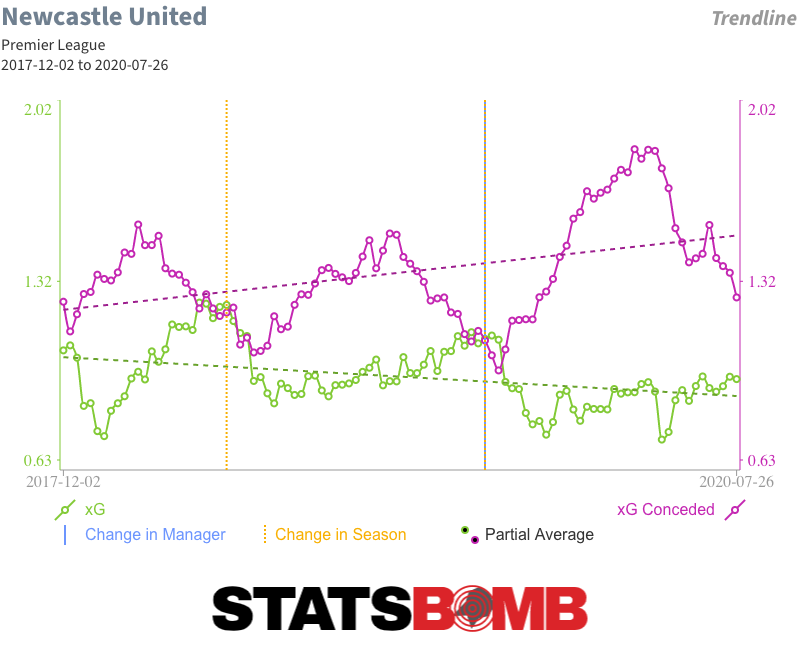
In combination, the second-worst attack and third-worst defence in the league gave them its worst expected goal (xG) difference.
So how did they stay up? Not only that, but relatively comfortably so? Two things happened: Newcastle overperformed their metrics to a greater degree than teams like Aston Villa and West Ham who finished below them, while the three relegated sides all underperformed theirs fairly significantly. Take either away and the Magpies would have been right on the cusp of relegation. Take both away, and it would have been a near certainty.
The defence falling away upset the delicate balance of the Rafael Benítez years. Under him, Newcastle were comfortably below average in attack but had the seventh best defence in the league in both 2017-18 and 2018-19. That kept them within respectable distance of a par goal difference and the mid-table safety that comes with it.
The scale of the defensive deterioration was impressive, particularly given the relative lack of squad turnover. In addition to the aforementioned 10-goal negative swing including penalties, Newcastle were 14 non-penalty goals and 9.24 xG worse off that the previous season.
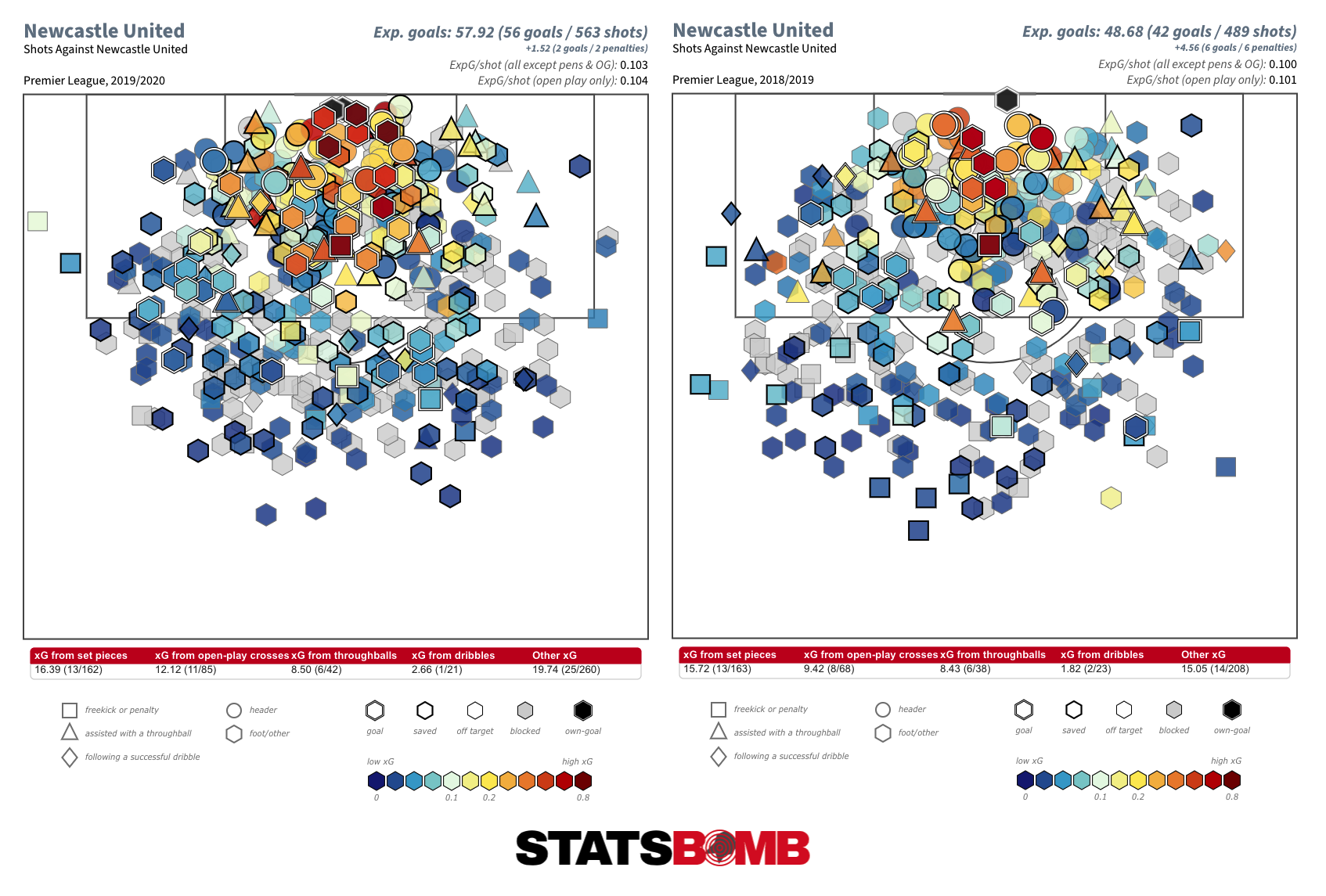
Under Benítez, Newcastle always defended a fair amount deeper and less proactively than the league average, but last season they just completely retreated into their shell. They defended deeper than any other side in the division and became almost comically passive.
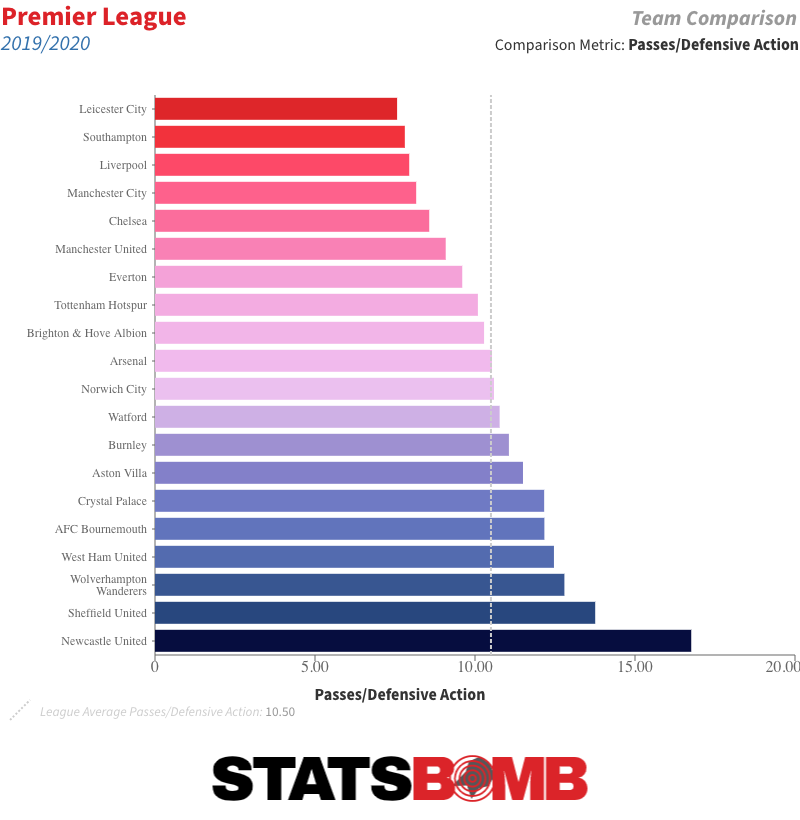
If Bruce’s idea was to restrict opposition shot quality by getting large numbers of players behind the ball then it really didn’t work out. Newcastle conceded around two more shots per match than the previous season (14.76, third worst in the league) without any change in the average quality of them.
It also doesn’t say much for his work on the training ground that Newcastle were genuinely bad at defending set pieces. Only two teams conceded more than their 13 goals from those situations, while their xG conceded of 16 was pretty comfortably the worst in the division. It wasn’t simply a case of Newcastle giving up a lot of set pieces, and consequently a lot of chances for opponents to create chances from them, due to their deep stance. They were about average in that, and anyway they were also the worst side in the league in terms of xG per set piece conceded.
The defence may have been the area of the team that declined most season-on-season, but Newcastle’s deficiencies in attack were no less alarming. A five-goal positive swing versus their expected numbers just about got them up to an average of one goal per match, but this was a team who really struggled to work the ball into good shooting positions.
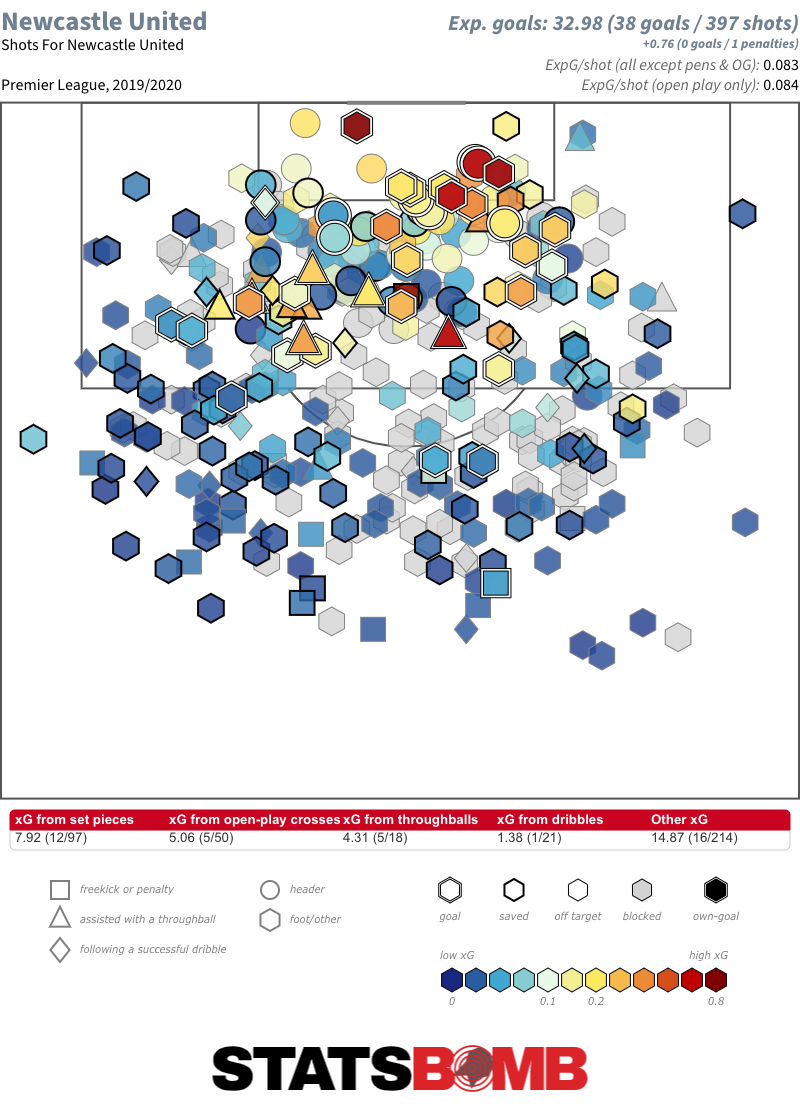
The Magpies took a below-average number of shots (10.45 per match), and those they did take were of the lowest average quality in the league. They took their shots from further out and got off less efforts from inside the area than any other team. Whenever they did shoot, they had more opposition defenders between shooter and goal than any other side.
There was a broader problem there. Newcastle lacked a reliable means of progressing the ball into advanced areas. No team in the league completed less passes within 20 metres of the opposition goal. Aside from Matt Ritchie, who missed just under the half the season through injury, no one else was able to successfully move the ball into the penalty area with even a semblance of regularity.
Newcastle were quite direct in initially advancing the ball. For the third season in a row, Jonjo Shelvey's attempted and completed passes were of a longer average length than those of any other Premier League midfielder who saw at least 900 minutes of action. That was in neat contrast to his fellow central midfielder Isaac Hayden, whose passing was demonstrably shorter and more conservative.
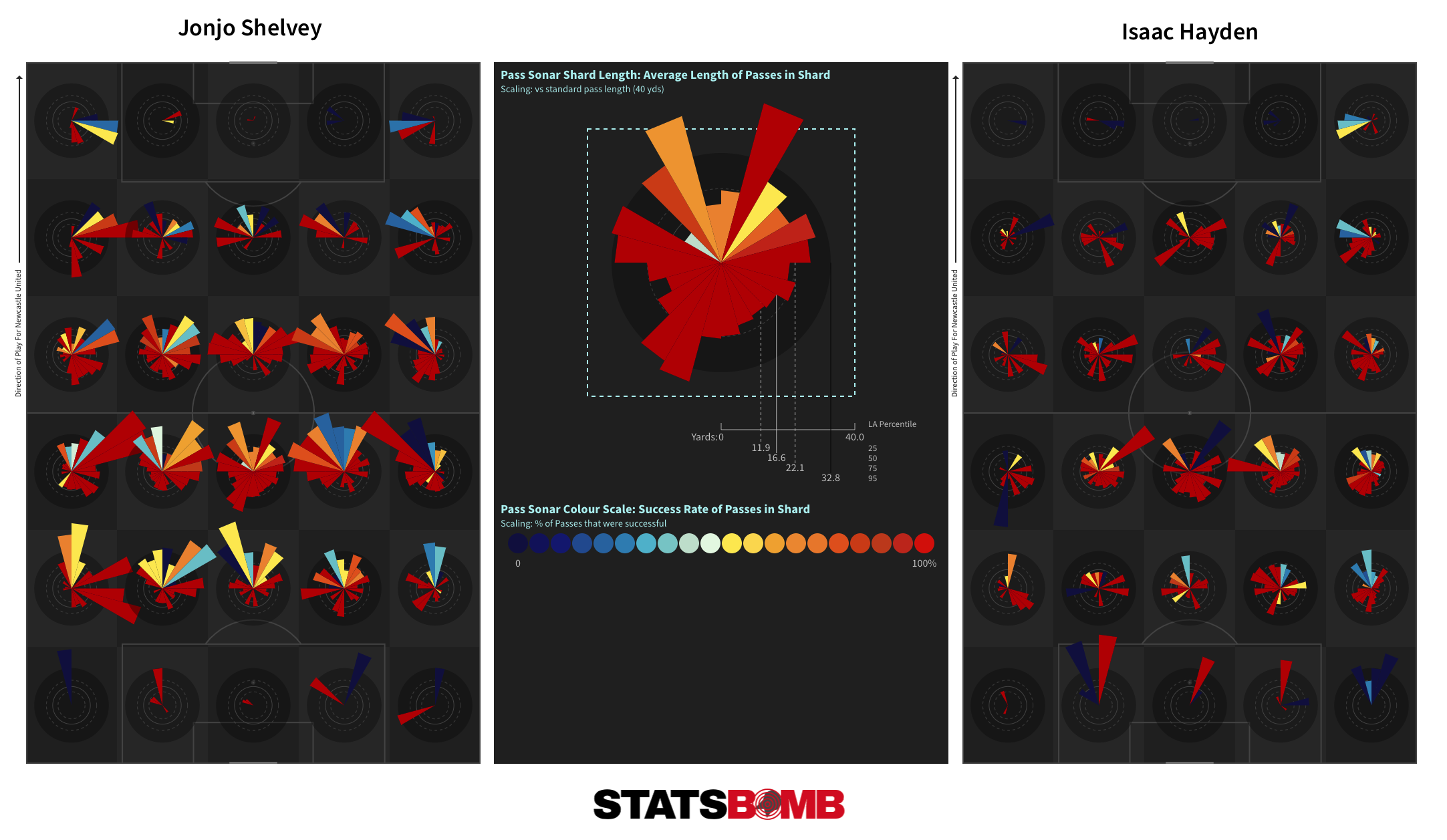
Along with Miguel Almirón, new arrivals Allan Saint-Maximin and Joelinton were Shelvey’s main targets from deeper areas. Saint-Maximin was fun to watch and also provided better end product than the rest of Newcastle’s regular attackers. Only Dwight Gayle, who only saw just over 900 minutes of action due to a recurring calf problem, bettered him in terms of both expected and actual goal and assist output per 90 minutes.
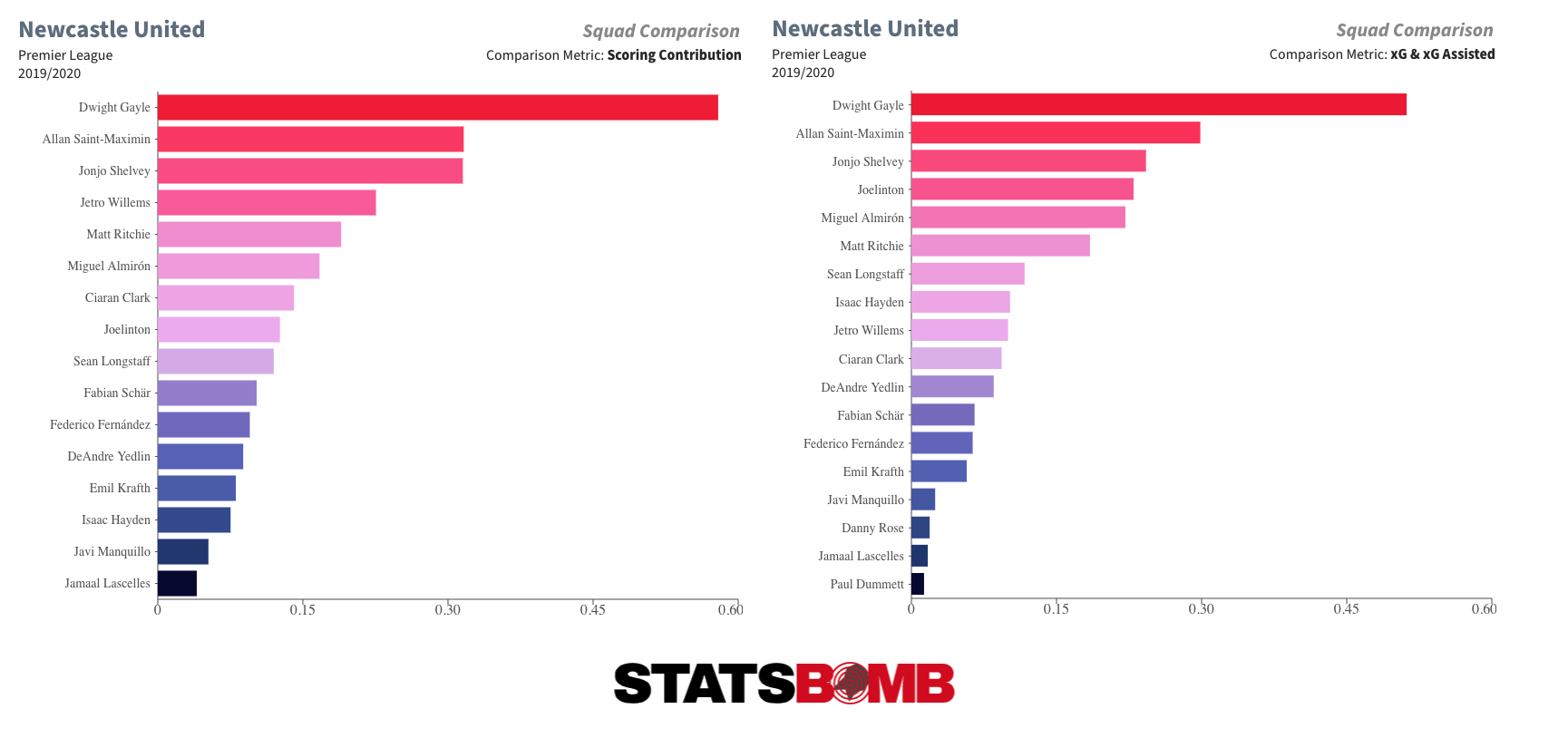
On a season total level, Shelvey was the top scorer with just six goals. No attackers got close to the marks set by the departed Ayoze Pérez (12) and Salomón Rondón (11) the season previous. Gayle and Almirón were the first attackers on the list with four. Joelinton grabbed just two from a marginally more encouraging 4.89 xG, although even that worked out to just 0.15 xG per 90.
The Brazilian striker seems to have become somewhat of a figure of fun in certain quarters, but he was rather set up to fail following his £40 million move from Hoffenheim. Not only did the fee appear inflated, but there was little evidence he was capable of playing the role Newcastle required of him. He was plucked from a high-pressing, attack-minded team with options all around him and plonked straight into the role of battering ram striker on a deep-lying, defensive-minded side with huge spaces between teammates.
If goals were what Newcastle wanted, he wasn't really the man either. He was, after all, only a one-in-three goalscorer on an attacking team in the most open of the big five European leagues. He was more roving facilitator than main striker, receiving, combining, carrying the ball forward and offering a solid combination of shot and creative output. Ishak Belfodil and Andrej Kramarić were the main goal-getters. At Newcastle, shorn of close collaborators and subjected to a bombardment of aerial service (46.81% of the passes he received were high balls, compared to just 24.36% at Hoffenheim), he looked very much out of place.
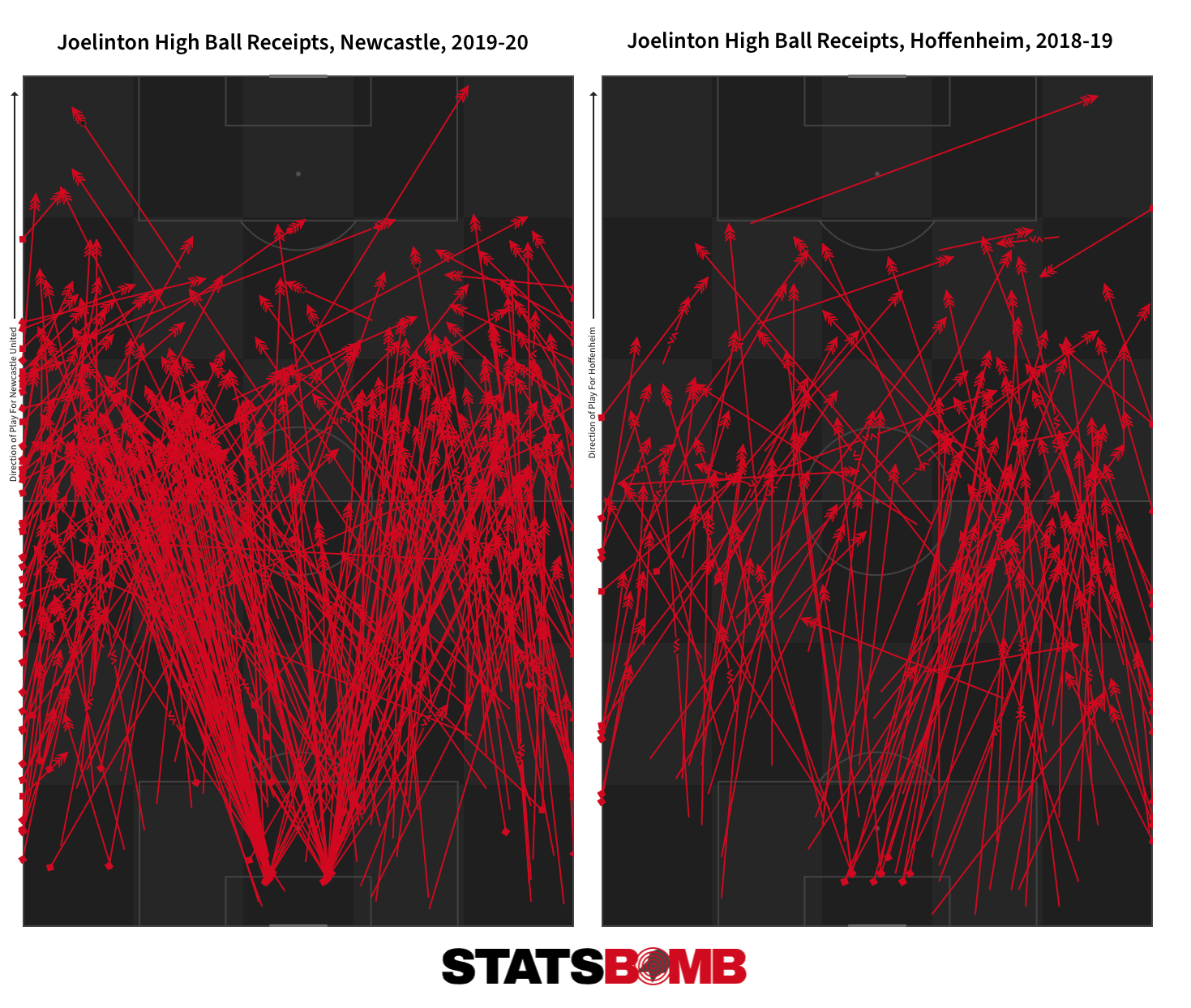
Joelinton was never going to be a direct stylistic replacement for Rondón, and his signing asks questions of the recruitment department or a huge disconnect between them and the coaching staff.
The club had made just a couple of low-profile free transfer signings ahead of the new season at time of writing, with goalkeeper Mark Gillespie and winger Jeff Hendrick coming in from Motherwell and Burnley respectively. There is talk of strong interest in the Bournemouth pair of Ryan Fraser and Callum Wilson, which would at least refresh things a little in attack, even though it is likely to take a bit more than that to avoid a struggle against the drop.
For months, hopes rested on the promise of a Saudi-backed takeover that would have brought with it a huge injection of funds and the arrival of high-profile coaching and playing staff. Regardless of where you stand on the Premier League’s decision to deny it, it was undeniably a much more enticing prospect than the alternative: another season of Bruce and the gang.
Relying on enough other teams to be worse and/or more unlucky than you it not a viable long-term strategy for remaining in the Premier League. Something has to change in comparison to last season, but it is genuinely hard to see where that change and improvement might come from within the current coaching and playing staff, certainly under the stewardship of the current ownership. If it doesn’t, Newcastle may just sleep walk their way to relegation.
If you're a club, media or gambling entity and want to know more about what StatsBomb can do for you, please contact us at Sales@StatsBomb.com We also provide education in this area, so if this taste of football analytics sparked interest, check out our Introduction to Football Analytics course Follow us on twitter in English and Spanish and also on LinkedIn
